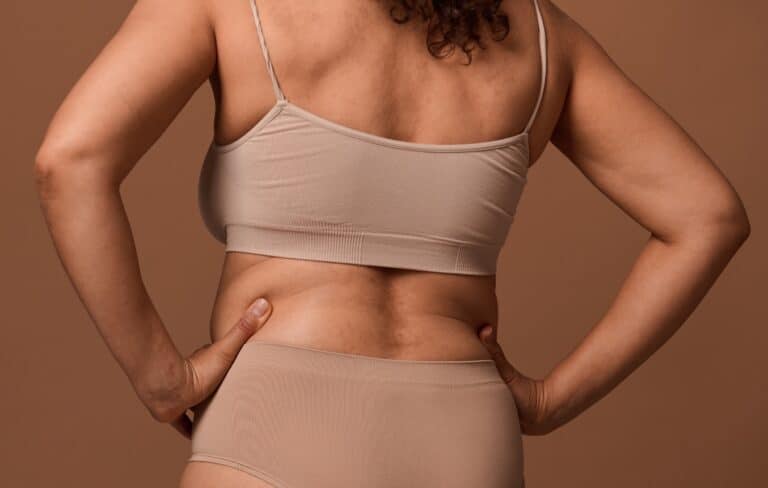
Arm Lift / Brachioplasty
An arm lift may be helpful if you are concerned about loose skin affecting your arms.
Arm lift surgery, also commonly known as brachioplasty, is a procedure designed to tighten and lift the skin of the upper arm. Sagging skin or ‘Bingo Wings’ can result from ageing and weight loss.
Loose skin around the arm area can make some people feel self-conscious and may limit the type of clothing that they can wear.
Arm lift overview
TYPE OF ANAESTHETIC
General
LENGTH OF SURGERY
2 Hours
HOSPITAL STAY
0-1
RECOVERY
1-2 weeks off work, 6 weeks before strenuous exercise
Procedure types
What are the options for arm lift surgery?
The are two main options for correcting excess upper arm skin and fat:
Liposuction
Liposuction
Liposuction is useful when there is fatty tissue and not too much excess skin. The other essential requirement is that the skin has reasonable elasticity so that it can shrink back after the liposuction.
Liposuction does not work well when skin quality is poor and where skin excess is significant.
Surgical removal of skin/ fat
Surgical removal of skin/ fat
Surgical removal/ brachioplasty remains the best option for dealing with excess skin of reduced elasticity. Many prospective patients are put off by the long scars that may result, and it is vital that anyone considering this surgery has a good understanding of the nature of the scarring.
Generally speaking, the scars can be hidden toward the back of the arms and are not noticeable when the arms are down by the sides. The images below show typical scars six months after surgery.
Arm lift scar – 6 months (results will vary from patient to patient)

What are the risks?
Arm reduction surgery is carried out under general anaesthesia. The risks of general anaesthesia include deep vein thrombosis(clots in your legs – 1-2 out of every 100 patients) and pulmonary embolism(when the clot breaks off and spreads to your lungs – less than 1 in 100 patients). A pulmonary embolus can rarely be fatal. We take precautions to minimise the risk of these. Other risks of general anaesthesia include chest infection.
The risk of an adverse outcome after a planned general anaesthetic is approximately 1 in 100,000.
The risks specific to arm reduction surgery include:
Bleeding
Bleeding
If a collection of blood forms (haematoma) a return to theatre may be required to remove this.
Bruising and swelling
Bruising and swelling
To be expected and may take 2 to 3 weeks to subside
Infection
Infection
Relatively uncommon and usually treated with antibiotics.
Delayed wound healing
Delayed wound healing
It is quite common to have small areas that take longer to heal than others. Rarely, larger areas of the wound may open and require dressings for several weeks until they are healed.
Scars
Scars
Scars are permanent. The length and quality of the scarring is the main downside to having arm reduction surgery. You will be shown images of the full extent of scarring including examples of poor scarring. It may take 2 to 3 years for the scars to fully mature and settle down and in a small number of patients scarring may remain poor.
Asymmetry
Asymmetry
It is common to have minor degrees of asymmetry.
Under or over correction
Under or over correction
We will always endeavour to remove the right amount of skin, but sometimes there may be some residual skin left. It is preferable to take less rather than more as removing too much skin will increase the risk of wound healing problems.
Numbness
Numbness
You will have patches of numbness on the inner aspect of your arm, and most of these will recover over time, but it is common to be left with small areas that are permanently numb.
Revision
Revision
A small number of patients will require revisional surgery to deal with unsatisfactory outcomes or problems resulting from complications.
Arm lift aftercare
Your surgeon will advise you on your post-operative aftercare. You will be seen 1 week after surgery by the nurses to have your outer dressings removed.

Author
Dr Will Anderson is a fully accredited Consultant Plastic Surgeon in Edinburgh on the GMC Specialist Register for Plastic Surgery (3679250). Having served as an NHS Consultant since 2008, he specialises in advanced reconstructive, cosmetic, and laser surgery. With global training and an MSc from University College London, he is renowned for his patient-centred care at Quaba Cosmetic Surgery.

